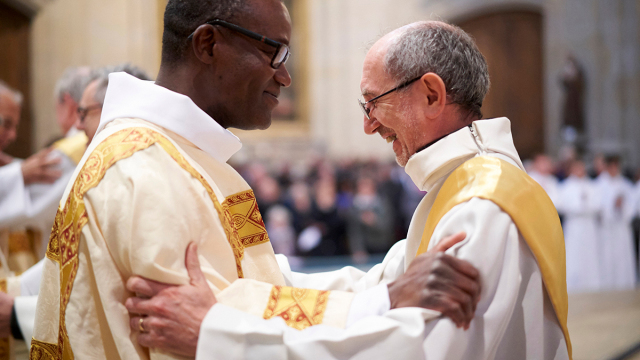In the Catholic Church, there are two different types of deacons. The most common type of deacon is the transitional deacon, who is typically a man on the way to the priesthood.
The second type of deacon, becoming increasingly more common, is the permanent deacon, meaning that the deacon will not become a priest and will remain a deacon for the rest of his life.
Deacons have been around since the early Church and are even referenced in the Acts of the Apostles.
The USCCB provides a succinct definition of a deacon and his particular role in the Church.
“A deacon is an ordained minister of the Catholic Church. There are three groups, or ‘orders,’ of ordained ministers in the Church: bishops, presbyters and deacons. Deacons are ordained as a sacramental sign to the Church and to the world of Christ, who came ‘to serve and not to be served.’ The entire Church is called by Christ to serve, and the deacon, in virtue of his sacramental ordination and through his various ministries, is to be a servant in a servant-Church.”
Deacons are called by God to serve in the Church, and this type of service is not open to everyone.
Here are the basic requirements to become a permanent deacon in the Catholic Church, though these can be altered by a local diocese.
- A man at least 35 years old.
- A practicing Catholic, and a baptized member for at least 5 years.
- Can be married, but must be valid or annulled and cannot remarry after ordination.
- Wife must be interviewed and consent to ordination. Married men cannot be ordained without wife’s approval.
- In good physical health.
- Have a stable mode of income.
- Pass all psychological exams and background checks.
Above all, becoming a permanent deacon is a particular vocation, a “call from God,” and can not be seen as a job or career, but a mode of service within the Church.



